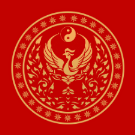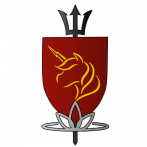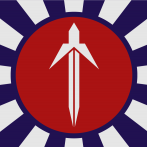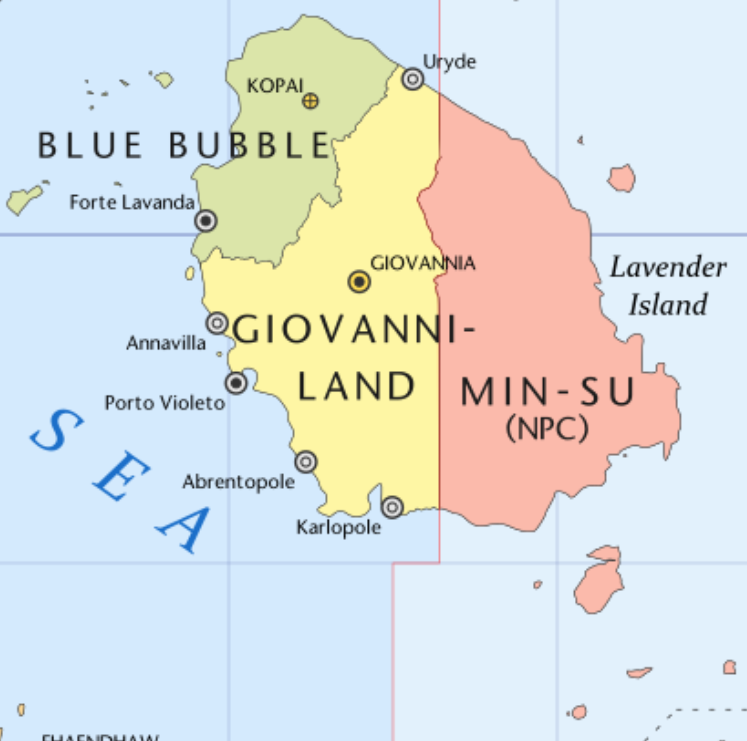Leaderboard
Popular Content
Showing content with the highest reputation on 05/03/24 in all areas
-

[Factbook] Empire of Minsu
Federation of Inner Ryxtylopia and one other reacted to Min-Su for a topic
2 points -
Local Government | 地方自治体 According to Article 92 of the Constitution, the local governments of Minsu (地方公共団体) are local public entities whose body and functions are defined by law in accordance with the principle of local autonomy. The main law that defines them is the Local Autonomy Law. They are given limited executive and legislative powers by the Jinrui Constitution. Governors, mayors and members of assemblies are constitutionally elected by the residents. The Ministry of Internal Affairs intervenes significantly in local government, as do other ministries. This is done chiefly financially because many local government jobs need funding initiated by national ministries. This is dubbed as the "thirty-percent autonomy". The result of this power is a high level of organizational and policy standardization among the different local jurisdictions allowing them to preserve the uniqueness of their prefecture, city, or town. Structure | 体制 Each jurisdiction has a chief executive, called a governor (知事, chiji) in prefectures and a mayor (市町村長, shichōsonchō) in municipalities. Most jurisdictions also have a unicameral assembly (議会, gikai), although towns and villages may opt for direct governance by citizens in a general assembly (総会, sōkai). Both the executive and assembly are elected by popular vote every three years. Local governments follow a modified version of the separation of powers used in the national government. An assembly may pass a vote of no confidence in the executive, in which case the executive must either dissolve the assembly within ten days or automatically lose their office. Following the next election, however, the executive remains in office unless the new assembly again passes a no confidence resolution. The primary methods of local lawmaking are local ordinance (条例, jōrei) and local regulations (規則, kisoku). Ordinances, similar to statutes in the national system, are passed by the assembly and may impose limited criminal penalties for violations (up to 2 years in prison and/or 1 million yen in fines). Regulations, similar to cabinet orders in the national system, are passed by the executive unilaterally, are superseded by any conflicting ordinances, and may only impose a fine of up to 50,000 yen. Local governments also generally have multiple committees such as school boards, public safety committees (responsible for overseeing the police), personnel committees, election committees and auditing committees. These may be directly elected or chosen by the assembly, executive or both. All provinces are required to maintain departments of general affairs, finance, welfare, health, and labor. Departments of agriculture, fisheries, forestry, commerce, and industry are optional, depending on local needs. The Governor is responsible for all activities supported through local taxation or the national government. Administrative Division | 行政区分 Minsu is divided into seven prefectures and 1 special administrative prefecture, each overseen by an elected governor and legislature. The eight prefectures are: ?. As of the 1422 census, Hinomaru-to, the sole-special administrative prefecture, is the most-populous and most densely populated prefecture with 4.82 million residents. In the State Local Government Code of 1331, a local government unit (LGU) can take the form of a prefecture, a district , or a municipality. All LGUs have local legislatures and local chief executives (governor, administrator, mayor, or district head) that are elected by popular vote. Minsu is divided into four levels of administrative divisions with the lower three being defined in the State Local Government Code of 1331 as local government units (LGUs). They are, from the highest to the lowest: Prefectures (県, -ken) and Special Administrative Prefecture (-to), mostly used to organize state services. Districts (郡, -gun/-chiku), divide prefectures into localities. Municipalities (-ku) such as a city (市, -shi), town (町, -cho/-machi), or village (村, -mura/-son); component localities. Sub Municipal Wards (行政区, -gyosei-ku), local divisions of component localities; within municipalities.2 points
-

[Factbook] Empire of Minsu
Federation of Inner Ryxtylopia and one other reacted to Min-Su for a topic
Government |政 府 The Imperial Government of the Empire of Minsu (Minsunese: 神聖ミンス帝国の帝国政府) is the government of Minsu. It is governed as a unitary state under a parliamentary democratic and a semi-constitutional monarchy wherein the Emperor functions as the head of state and the Prime Minister as the head of government of the country within a pluriform multi-party system. The government is divided into three interdependent branches: the legislative, executive, and judicial branches. The Jinrui Constitution vests the following authorities in the branches: Executive power is exercised by the government under the leadership of the Prime Minister. The Congress of Minsu has two chambers: the Senate is the upper chamber, and the House of Representatives is the lower chamber. The courts have judicial power, with the Supreme Court of Minsu serving as the highest judicial body. The Emperor is the head of state, the Zenith Paragon of the faith, and the supreme commander of the Imperial Armed Forces. He is the guarantor of the country's independence and the empire's territorial integrity within its original borders. He wields imperial prerogatives, administrative, political, and religious powers conferred by the constitution. History | 歴史 Historically influenced by Gaoist religious law, the Minsunese legal system developed independently during the era of Empress Chomei with the Gadoji Constitution. In 1272 BF, Minsu established a civil code, the Gadoji Constitution, which remained in effect until the era of the Shogunates in 1099 BF. The Gadoji was further improved with Prince Yakamochi's far-reaching Genji Reforms in 1257 BF. The Jinrui Constitution, adopted in 1330 was drafted by Emperor Fujiro. Statutory law originates in the legislature, and the constitution requires that the emperor to promulgate legislation passed by the Congress and gives him the power to oppose legislation. The main body of Minsunese statutory law is called the Six Codes. The Minsunese court system is divided into four basic tiers: the Supreme Court and three levels of lower courts. The Emperor | 天皇 The Emperor of Minsu (天皇) is the head of the Imperial Family and the head of state of the country. He is defined by the Constitution to be "the symbol of the State, supreme and religious head, the Guarantor of Independence, and the symbol of the unity of the people". The emperor performs ceremonial, administrative, and political duties. As a semi-constitutional monarch, the emperor wields imperial prerogatives, administrative and political powers conferred by the constitution. The Emperor is the source of sovereign power and the government acts under his name. Article 5 of the Jinrui Constitution, in accordance with the Imperial Household Law, allows a regency to be established in the Emperor's name, should the Emperor be unable to perform his duties. The current Emperor of Minsu (今上天皇) is Asashio. He was officially enthroned on May 1, 1409, following the abdication of his father. He is styled as His Imperial Majesty (天皇陛下). Prince Kishida is the heir presumptive to the Imperial Throne. Executive Branch | 管 理 の The executive branch of Minsu is headed by the Prime Minister. The Prime Minister is the head of the Cabinet, and is designated by the Emperor. The Cabinet consists of the Ministers of State and may be appointed or dismissed by the Prime Minister or the Emperor at any time. Explicitly defined to be the source of executive power, it is in practice, however, mainly exercised by the Emperor and his representative to the government, the Prime Minister. The practice of its powers is responsible to the Congress, and as a whole, should the Cabinet lose confidence and support to be in office by the Congress, the Congress may dismiss the Cabinet en masse with a motion of no confidence. Prime Minister | 首相 The Prime Minister of Minsu is designated by the Emperor and the Congress, serving a term of six years or less; with no limits imposed on the number of terms the Prime Minister may hold. The Prime Minister heads the Cabinet and exercises "control and supervision in the emperor's stead" of the executive branch, and is the head of government. The Prime Minister is vested with the power to present bills to the Congress, to sign laws, to declare a state of emergency, and may also dissolve the Congress' House of Representatives at will. He or she presides over the Cabinet and appoints, or dismisses, the other Cabinet ministers. Both houses of the Congress and the Emperor designates the Prime Minister with a ballot cast under the run-off system. Under the Jinrui Constitution, should both houses not agree on a common candidate, then a joint committee is allowed to be established to agree on the matter; specifically within a period of ten days, exclusive of the period of recess. However, if both houses still do not agree to each other, the decision made by the Emperor is deemed to be that of Congress. Upon designation, the Prime Minister is presented with their commission, and then formally appointed to office by the Emperor. As a candidate designated by the Congress and the Emperor, he or she is required to report to the Congress and to the imperial throne whenever demanded. The Prime Minister must also be both a civilian and a member of either house of the Congress. The Cabinet | 内閣 The Cabinet of Minsu consists of the Ministers of State and the Prime Minister. The members of the Cabinet are appointed by the Prime Minister, and under the Cabinet Law, the number of members of the Cabinet appointed, excluding the Prime Minister, must be 15 or less, but may only be increased to twenty-four should a special need arise. Article 68 of the Jinrui Constitution states that all members of the Cabinet must be civilians and the majority of them must be chosen from among the members of either house of the Congress. The precise wording leaves an opportunity for the Prime Minister to appoint some non-elected Congress officials. The Cabinet is required to resign en masse while still continuing its functions, till the appointment of a new Prime Minister. Under the Constitution, all laws and cabinet orders must be signed by the competent Minister and countersigned by the Prime Minister, before being formally promulgated by the Emperor. Also, all members of the Cabinet cannot be subject to legal action without the consent of the Prime Minister; however, without impairing the right to take legal action. The current cabinet was formed on 10 May 1422. It is headed by Prime Minister Sakaki Kono. Ministries | 省庁 The Ministries of State of Minsu consist of eleven executive ministries, 1 special office, 2 cabinet-level agencies, and the Cabinet Office. Each ministry is headed by a Minister of State, which are mainly senior legislators, and are appointed from among the members of the Cabinet by the Prime Minister. The Cabinet Office, formally headed by the Prime Minister, is an agency that handles the day-to-day affairs of the Cabinet. The ministries are the most influential part of the daily-exercised executive power, and since few ministers serve for more than a year or so necessary to grab hold of the organisation, most of its power lies within the senior bureaucrats. Below is a series of ministry-affiliated government agencies and bureaus responsible for government procedures and activities as of 23 August 1422. OFFICE DESIGNATION Imperial Household SPECIAL OFFICE Cabinet Office CABINET OFFICE Agriculture MINISTRY Defense MINISTRY Economy, Trade and Industry MINISTRY Education, Science and Technology MINISTRY Environment MINISTRY Finance MINISTRY Foreign Affairs MINISTRY Health, Labour and Welfare MINISTRY Internal Affairs and Communications MINISTRY Justice MINISTRY Land, Infrastructure, Transport and Tourism MINISTRY Digital Agency CABINET AGENCY Religious Affairs CABINET AGENCY2 points -

[Factbook] Empire of Minsu
Federation of Inner Ryxtylopia and one other reacted to Min-Su for a topic
Politics | 政 治 Overview The politics of Minsu are conducted in a framework of a multi-party bicameral parliamentary representative democratic semi-constitutional monarchy in which the Emperor is the Head-of-State, with reserved political, administrative and military powers; and the Prime Minister as the Head-of-Government and the Cabinet, which directs the executive branch. Legislative power is vested in the Congress, which consists of the Senate and the House of Representatives. The Senate consists of ? members and the House of Representatives has ? members. Judicial power is vested in the Supreme Court and lower courts, and sovereignty is vested in the Imperial Throne and their people by the Constitution. Minsu is considered a semi-constitutional monarchy with a system of reserved imperial and civil law. Constitution | 会則 The Jinrui Constitution was drafted into law by Emperor Fujiro, on the first hour of the new year of 1330. It was promulgated on the 2nd of January 1330 and came into effect on the 20th of January 1330. The 1330 Jinrui Constitution established clear limits on the power of the executive branch and the Emperor. It also created a semi-independent judiciary. Civil rights and civil liberties were allowed, though they were freely subject to limitation by law. Free speech, freedom of association and freedom of religion were all limited by laws. The leaders of the government, politicians, and the judges were left with the task of interpreting the laws using the Jinrui Constitution to justify imperial sovereignty and democracy. Government | 政府 The 1330 Jinrui Constitution defines the Emperor as "the symbol of the State, supreme and religious head, the Guarantor of Independence, and the symbol of the unity of the people". He performs ceremonial, administrative, and political duties. "Political power" is held mainly by the Prime Minister and other elected members of the Congress as representatives of the will of the Imperial Throne. The Imperial Throne is succeeded by a member of the Imperial House as designated by the Imperial Household Law. The chief of the executive branch, the Prime Minister, is appointed by the Emperor as the chosen representative of His Majesty to the government. They are a member of the Senate and must be a civilian. The Cabinet members are nominated by the Prime Minister, and are also required to be civilian. It has been convention that the President of the majority political party serves as the Prime Minister of the country. Legislature | 議会 According to the Jinrui constitution, the Congress, which enacts laws, shall be composed of two Houses, namely the Senate and the House of Representatives. The Congress is the highest organ of state power aside the Imperial Throne. It stipulates that both Houses shall be composed of elected members who represent all citizens, and that the number of members in each House shall be established by legislation. For legislation to become law, both houses must pass it in identical form. Similarly to other parliamentary systems, the government proposes the majority of legislation examined by the Congress. The cabinet then depends on the bureaucracy's competence to write actual bills. The Senate has the legislative authority to oversee budget passage, treaty ratification, and Prime Minister appointment. Senators are chosen for a six-year term with a three-term restriction. Every three years, half of the members are elected. The lower chamber, the House of Representatives, writes bills that are then transmitted to the Senate. Members of the lower house are chosen for three-year periods from each prefecture's districts. Foreign Relations | 外交関係 Minsu is a member state of the World Assembly. It attaches great importance to economic, trade, and mutual defense treaties among its neighbors. As of November 1421, Minsu is a signatory of the Multinational Working Group Regarding Passport Security and Travel Document Standards (MWG). The Ministry of Foreign Affairs (MOFA) in 1421 has released four new state passports that follows eMRTD standards.2 points -

[Factbook] Empire of Minsu
Federation of Inner Ryxtylopia and one other reacted to Min-Su for a topic
Geography | 地理 Minsu is a country covering the eastern-half of Lavender island with 9 territorial islands along the great coast of Lavender island. The territory covers 190,900 km² (73,707 sq mi.) The northwestern portion of the country, which encompasses most of ? prefecture, is characterized by a flat terrain extending east from the coastline toward the Aoi Central mountains. The climate varies from subtropical in the north to humid subtropical and tropical rainforest in the south. These differences in climate and landscape have allowed the development of a diverse flora and fauna, with some rare endemic species, especially in the Oga Islands. The 9 territorial islands are Taka, Himiko, Shojin, Kikyo, Mitsuha, Seijin, Suzuna, Mikumo, and Nakajima. Because of Minsu's many far-flung outlying islands and long coastline, the country has extensive marine life and mineral resources in the ocean. Natural Resources | 天然資源 Land Resources | 土地資源 There are medium deposits of coal, oil, iron and minerals in the Minsunese territory. Minsu is rich in natural resources and has long been exporting its vast resources such as energy and raw materials. The oil crisis in 1378 encouraged the efficient use of energy in the country. Minsu has aimed to diversify its sources and maintain high levels of energy efficiency. In regards to agricultural products, the self-sufficiency rate of most items is between 60-80% except for rice. Rice has a 100% food self-sufficiency. This made it easy to meet Minsu's food demand and food security goals. Marine Resources | 海洋資源 The Exclusive Economic Zone (EEZ) of Minsu has an estimated large quantities of mineral resources such as methane clathrate, natural gas, metallic minerals and rare-earth mineral reserves. Seabed mineral resources such as manganese nodules, cobalt-rich crust and submarine hydrothermal deposits are located at depths over 1,000 m (3,300 ft). Most of these deep sea resources are unexplored at the seabed. It is estimated that there are approximately 40 trillion cubic feet of methane clathrate in the northeastern Tankai Trough of Minsu. As of 1419, the methane clathrate in the deep sea remains unexploited, because the necessary technology is not established yet. This is why currently Minsu has only proven reserves like crude oil and natural gas. The ? prefecture alone is estimated to have over 450 billion cubic meters of natural gas reserves. In 1418, 190 km (118 mi) east of Nakajima island at 5,700 m (18,700 ft) deep, approximately 21 million tons of rare-earth minerals were discovered by MAMSTEC in collaboration with Shokaku University and Kongo University. Energy | 電気 As of 1411, 46.1% of energy in Minsu was produced from petroleum, 21.3% from coal, 21.4% from natural gas, 7.3% from combined solar, wind, and hydropower. Minsu's is self-sufficient in terms of energy production with its extensive offshore oil reserves. Reforms of the electricity and gas sectors, including full liberalization of Minsu's energy market in April 1416 and gas market in April 1417, constitute an important part of Prime Minister ? economic program. Minsu has a large geothermal reserves in the world. Geothermal energy is being heavily focused on as a source of power. The Ministry of Energy (MOEn) is exploring over 15 locations for potential geothermal energy plants. On 1423, Minsu's government pledged to increase renewable energy sources from 15% to 22–24% including wind and solar by 2030. This will help Minsu meet climate change commitments and the Green Initiative.2 points -
.thumb.png.4daa7e8c59da438450aaf48f86059164.png)
[WIP] The Great Compendium of Giovanniland History
Ventel reacted to Giovanniland for a topic
The Great Compendium of Giovanniland History Part 1: Ancient to Medieval Aura Antiquity: Ancient Lavandula Classical Age: Lavandulan Empire Medieval Age: Abrentan Civilization Medieval Age: Post-Imperial Lavandula Part 2: Ancient to Medieval Andolia Part 3: Modern and Contemporary History1 point -
Minsu ミンス帝国 (Minsunese) Minsu teikoku Flag Seal Anthem Gao e no ōdo (ガオへのオード) Location Capital Asahi Largest Kongo Official Language Minsunese Demonym(s) Minsunese Government Type Unitary parliamentary Semi-constitutional monarchy Head of State Emperor Head of Government Prime Minister Legislature Congress Upper House Senate Lower House House of Representatives Geography Area km2 Land 190,900 km2 Water km2 Population 10,284,884 (1422 census) Density 53.9/km² Economy GDP (PPP) 1422 Estimate $412,464,979,558 Per capita $40,104 Currency Minsunese yen (MU¥) Time Zone IAT +0 Driving Side Right Calling Code +2 13 Internet TLD .mu Minsu (Minsunese:ミンスの聖なる帝国) is a small sovereign state in the Auran continent, covering the eastern-half of Lavender Island. Asahi is the capital of the country with Kongo as the largest. Other notable cities are Fuso, Nagato, and Ise. About one-third of the country's terrain is mountainous, with its population of 10.2 million concentrated on the coastal plains. Minsu covers 190,900 km² and is divided into seven prefectures and 1 special prefecture. The Hinomaru Metropolis (Hinomaru-to) is the most populous metropolitan area in Minsu, with more than 4.82 million residents. After centuries of absolute monarchical rule, Emperor Fujiro, the People's emperor, drafted the Jinrui Constitution in 1330 AF allowing democracy to flourish under imperial rule. In the 1330 constitution, Minsu maintains a unitary parliamentary semi-constitutional monarchy with a bicameral legislature, the Congress. Minsu is a developed-country with a national GDP at MU¥ 470 billion, led by Oil and Petroleum, Tourism, Electronics, and Shipbuilding. It has a GDP per capita of MU¥ 45,718.56.1 point





















